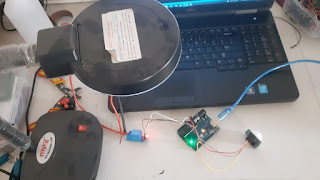DIY Motion-Activated Relay Control using Arduino


Securing your home or workspace is a top priority, and with the power of Arduino, creating a custom door lock security system becomes an exciting and achievable project. In this guide, we'll explore how to build a Door Lock Security System using an Arduino Uno, a 4x4 Keypad, and a Servo Motor.
The provided Arduino code uses the Keypad library to read input from the 4x4 keypad. A servo motor is employed to simulate a door lock mechanism. When the '#' key is pressed, it toggles the door lock state between locked and unlocked.
Note: It is essential to have the Keypad and Servo libraries installed in the Arduino IDE. Pin numbers and servo positions should be adjusted based on actual hardware connections.
Arduino Code:
// Include necessary libraries #include <Keypad.h> #include <Servo.h> // Define keypad layout const int ROWS = 4; const int COLS = 4; char keys[ROWS][COLS] = { {'1','2','3','A'}, {'4','5','6','B'}, {'7','8','9','C'}, {'*','0','#','D'} }; // Define keypad pin connections byte rowPins[ROWS] = {9, 8, 7, 6}; byte colPins[COLS] = {5, 4, 3, 2}; // Create Keypad and Servo objects Keypad keypad = Keypad(makeKeymap(keys), rowPins, colPins, ROWS, COLS); Servo doorLock; // Define servo positions const int unlockPosition = 90; const int lockPosition = 0; bool doorLocked = true; // Initial door state void setup() { // Attach the servo to pin 10 doorLock.attach(10); Serial.begin(9600); } void loop() { char key = keypad.getKey(); if (key) { Serial.println(key); if (key == '#') { if (doorLocked) { unlockDoor(); } else { lockDoor(); } } } } void unlockDoor() { doorLock.write(unlockPosition); delay(1000); // Delay to ensure the servo has enough time to move doorLocked = false; Serial.println("Door Unlocked"); } void lockDoor() { doorLock.write(lockPosition); delay(1000); // Delay to ensure the servo has enough time to move doorLocked = true; Serial.println("Door Locked"); }
Password Protection:
Multiple User Support:
Encrypted Communication:
Congratulations! You've successfully created a DIY Door Lock Security System using Arduino and a keypad. As you explore further, consider additional security features and encryption methods to tailor the system to your specific needs.
Stay tuned for more exciting Arduino projects and security system guides in our DIY series!
Comments
Post a Comment